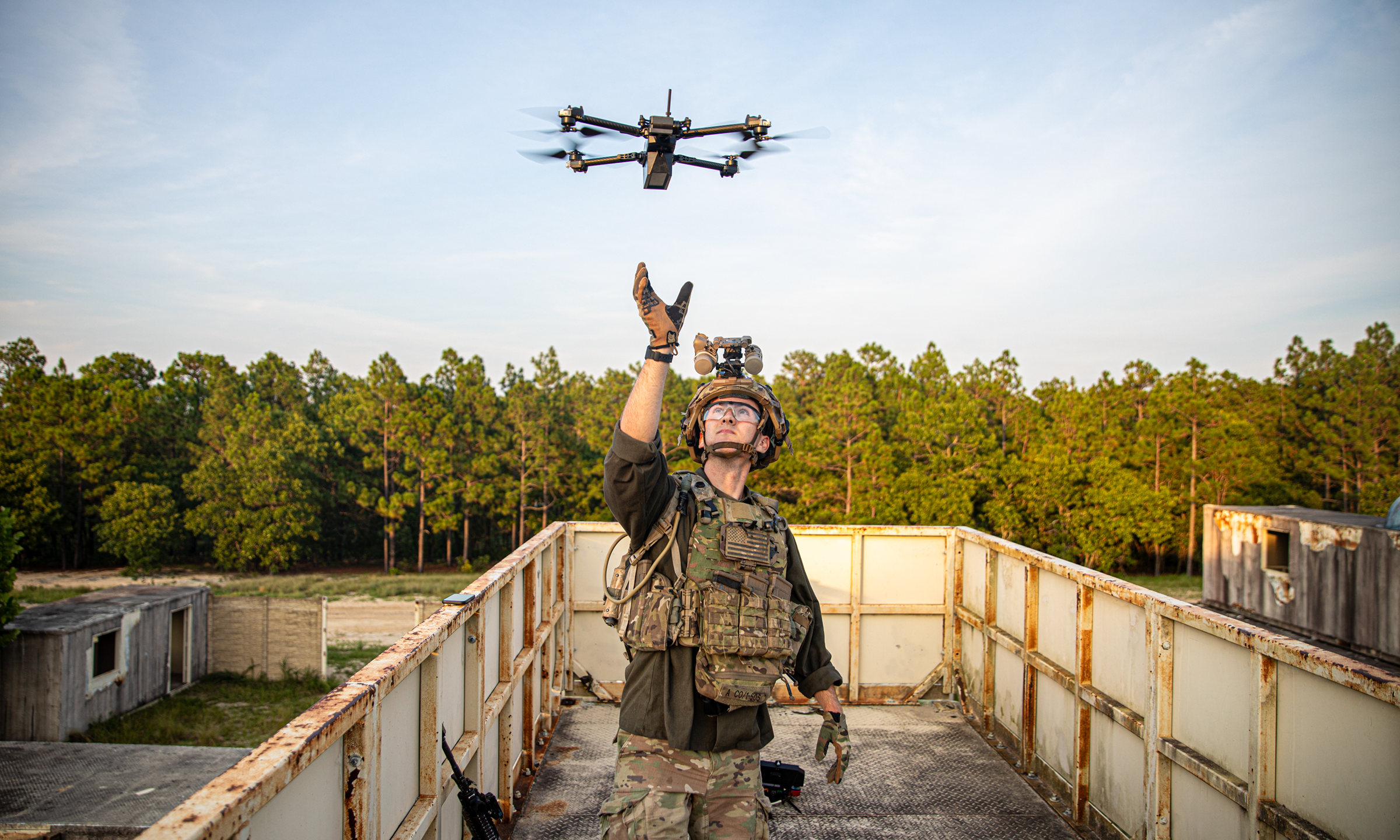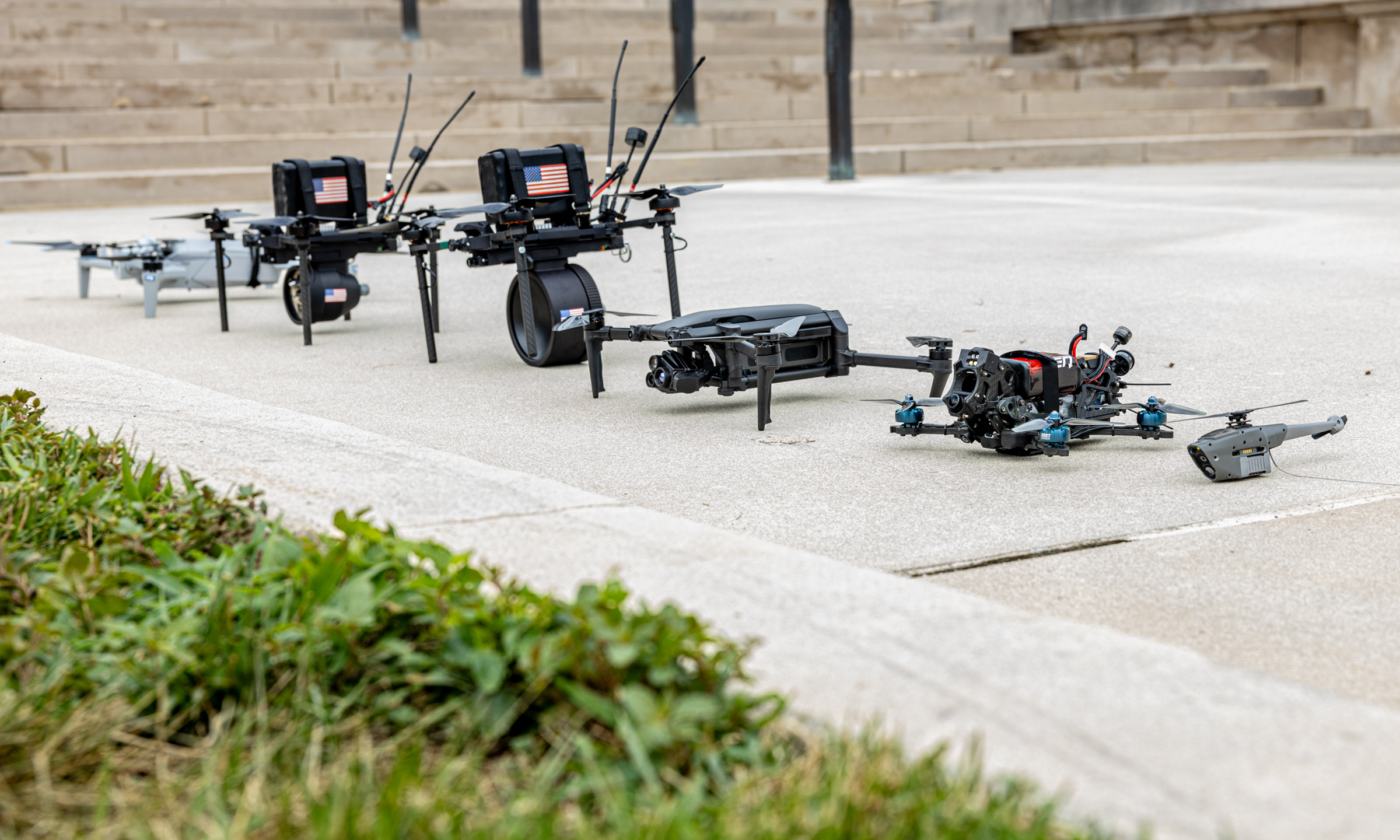On 21/7, the US Army posted a video of soldiers practicing with small drones to drop live grenades at a training ground in Germany, with the caption, "Have you ever seen a grenade-dropping drone?".
The video drew criticism from X users and military experts. They pointed out that the tactic of using drones to drop explosives emerged in 2017 and has become common in conflicts worldwide, yet the US Army presented it as new technology.
"I've been criticized a lot for constantly pointing out that the Pentagon is unreasonably behind in the field of inexpensive drones. This post proves it," wrote Tyler Rogoway, editor of the military website War Zone.
This lag was also reflected in a 4-day exercise conducted last month in Alaska by the Defense Innovation Unit (DIU), part of the Pentagon.
Defense Department-funded manufacturers tested suicide drones, deploying them against pre-loaded targets while soldiers used electronic warfare equipment to intercept them.
 |
US soldiers retrieve a drone at Fort Bragg, North Carolina on 22/7. Photo: US Army |
US soldiers retrieve a drone at Fort Bragg, North Carolina on 22/7. Photo: US Army
During the exercise, a long-range drone missed its target by about 24 meters. Another crashed shortly after takeoff, and a third hit a mountain.
According to US military officials and drone experts, the US is lagging behind both Russia and China in drone production and training soldiers to use and defend against them.
"Everyone knows we haven't given our soldiers what they need to survive on today's battlefield," said Trent Emeneker, a DIU member. "If war breaks out tomorrow, do we have what we need? The answer is no, and we're trying to fix that."
Secretary of Defense Pete Hegseth acknowledged that Washington is behind in drone technology and announced new policies and investments to close the gap.
In a mid-month message, he pointed out that outdated regulations and procurement processes are hindering the US military's efforts to acquire drones and train soldiers.
"Our adversaries have produced millions of cheap drones, while we are stuck in cumbersome administrative procedures," Secretary Hegseth said.
In June, President Donald Trump signed an executive order titled "Unleashing American Drone Dominance," directing federal officials to expedite licensing for drone manufacturers and protect the US drone supply chain from "unjustified" foreign interference.
However, US media reports suggest it will take time and money to develop a domestic drone industry with sufficient output to meet military needs.
According to Ryan Carver, communications manager for the Association for Unmanned Vehicle Systems International, the US has about 500 drone manufacturers capable of producing nearly 100,000 units annually. But most are startups lacking manufacturing and sales experience.
The Alaska exercise also demonstrated the difficulty US companies face in drone design, with many products underperforming. For example, an AeroVironment drone prototype nearly hit soldiers standing near a jamming device after its GPS signal was blocked.
Startup Dragoon's drone experienced engine and navigation problems, preventing it from hitting its target. On the final day, it identified and struck an M113 armored personnel carrier. While considered a successful strike, it wasn't the intended target.
 |
US Secretary of Defense Pete Hegseth at the Pentagon on 10/7. Photo: US Marine |
US Secretary of Defense Pete Hegseth at the Pentagon on 10/7. Photo: US Marine
"It didn't go as smoothly as I had hoped. There are clearly some major technological challenges to overcome," Emeneker said.
Soldiers participating in the exercise, mostly from the 11th Airborne Division's Electronic Warfare Unit, also faced difficulties jamming drones.
They set up six jamming stations on a mountaintop to suppress control signals, but the decade-old equipment was largely ineffective. Even more modern anti-drone equipment in some soldiers' backpacks didn't work.
The unit also had specialized anti-drone guns, but no soldier wanted to use them. "That thing has never worked," one soldier said.
However, they gradually improved and found ways to use the jamming equipment more effectively by the fourth day. The soldiers said Magpie, a suitcase-sized jamming device, worked particularly well.
But Lieutenant Colonel Scott Smith, commander of the 11th Division's non-lethal operations, noted that the exercise showed the US has much to do to prepare for drone warfare.
"Their equipment is not as effective as we would like against the latest technologies," Smith said.
Chris Bonzagni, a drone consultant who helped organize the exercise, said many drones the US provided to Ukraine early in the conflict failed due to outdated technology or vulnerability to Russian jamming.
"In Ukraine, companies providing technology to soldiers have to be with them all the time to see what works and what doesn't," Bonzagni said.
Ukraine has become a global drone production center, as its soldiers and engineers have been forced to master the technology to survive, something Americans haven't experienced.
 |
Drones on display at the Pentagon on 10/7. Photo: US Marine |
Drones on display at the Pentagon on 10/7. Photo: US Marine
One promising name in the US drone industry is Neros. The company supplies about 6,000 units to Ukraine and is touted by US leaders as the best alternative to DJI, the world's largest drone manufacturer from China.
Neros' Archer drone demonstrated effective anti-jamming capabilities in the Alaska test and is affordable, at about 2,000 USD per unit. However, Neros currently produces only about 1,500 Archer drones per month due to manual assembly and a 15-worker factory.
Soren Monroe-Anderson, CEO and co-founder of Neros, said he is expanding production and wants to build a factory capable of producing one million drones a year. He also aims to compete with DJI but admits it's a difficult goal.
"They're better than any other company in the world," Monroe-Anderson said.
Pham Giang (According to War Zone, Economic Times)












